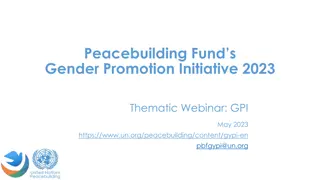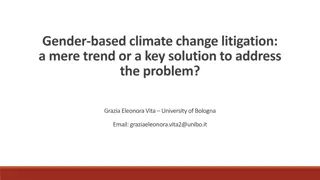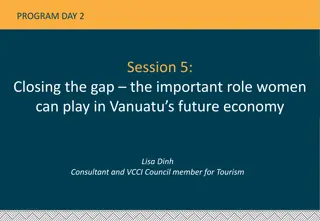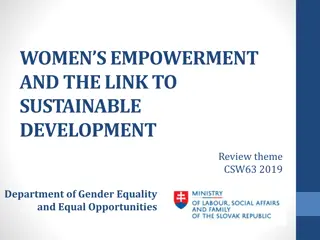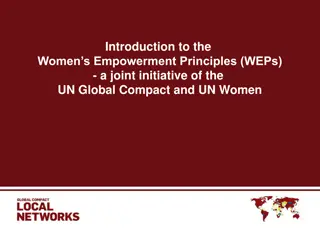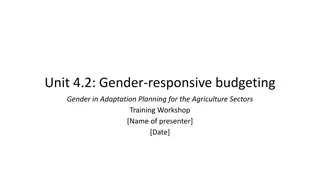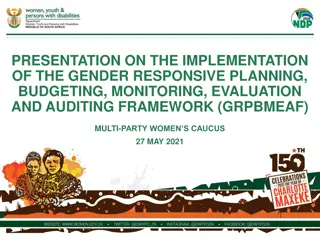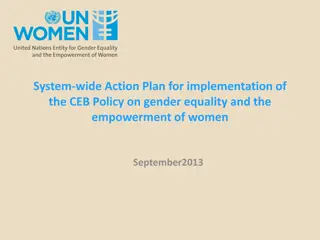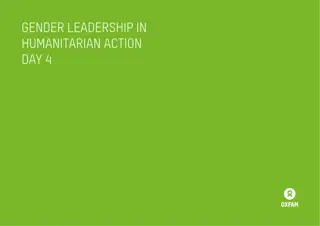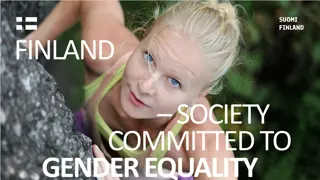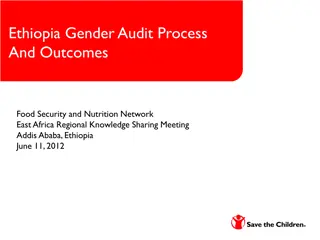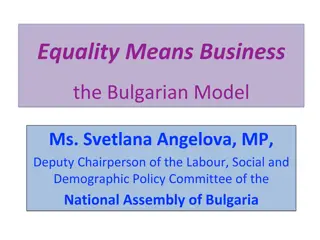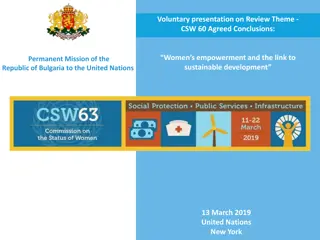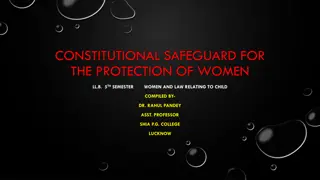Gender Equality & Women's Empowerment in Ethiopia
Gender equality and women's empowerment in Ethiopia are crucial for creating a generation that does not tolerate violence against women. Women face obstacles like extreme poverty, lack of education, and employment inequality. The country has made progress in ensuring women's full participation and benefits through policy frameworks, gender mainstreaming, and international agreements. Initiatives like distribution of fuel-efficient cooking stoves and access to safe drinking water aim to uplift women economically and socially.
Download Presentation

Please find below an Image/Link to download the presentation.
The content on the website is provided AS IS for your information and personal use only. It may not be sold, licensed, or shared on other websites without obtaining consent from the author.If you encounter any issues during the download, it is possible that the publisher has removed the file from their server.
You are allowed to download the files provided on this website for personal or commercial use, subject to the condition that they are used lawfully. All files are the property of their respective owners.
The content on the website is provided AS IS for your information and personal use only. It may not be sold, licensed, or shared on other websites without obtaining consent from the author.
E N D
Presentation Transcript
Gender Equality & Women's empowerment in Ethiopia Let's create a generation that does not tolerate violence against women
Gender equality means that women and men and girls and boys all enjoy the same rights, resources, opportunities and protections. Extreme household poverty, walking distance to school, inadequate school resources, lack of sanitation facilities, child labor and marriage, and female genital cutting are among obstacles that prevent girls from education. NB Lack of education means girls forced into informal labor market at an early age. One of the causes for gender inequality within employment is the division of jobs. In most societies, there's an inherent belief that men are simply better equipped to handle certain jobs.
women are the backbone of a country's development and the backbone of a society. But, their political, economic, and social participation and benefits have been low due to past undemocratic regimes and societal stereotypes. Since the regime change in the country in 1983, women have been given equal opportunity to participate in and benefit from the political, economic and social sectors of the country. They have been given the opportunity to participate in all fields and to benefit from their participation. It is worthwhile to look at the progress made and the changes that have been made for the change of the women of our country.
The government undertook a wide range of activities to ensure women's full participation and benefit. Policy and legal frameworks, Gender mainstreaming, international agreements, Cooperation and coordination, The creation and strengthening of organizations around women, as well as economic, social and political participation and benefits.
Proclamation No. 691/2003 stipulates that all institutions should include women's issues in their programs and plans. The National Action Plan on Gender was implemented from 2006 to 2010 E.C. In the Poverty Alleviation Strategy (PASDEP), women's issues are currently gaining traction in the Growth and Transformation Plan (GTP). Deployment of Women's Affairs Structures Gender inclusion activities Creating and strengthening organizations International agreements, cooperation and coordination works is implemented
Economically Fuel-efficient cooking stoves have been distributed They have access to safe drinking water Mill service is provided at a distance of a few km Opportunities created to engage in a variety income generating activities In related agricultural activities Millions of women own land If both men and women are married, they have been certified as landowners. Women are also using agricultural extension services and are benefiting from agricultural extension services. Local lending institutions are providing services to enable women to take out loans to grow their markets and develop their saving culture.
Population of Ethiopia is 116,878,181. The female labour force participation rate is the percent of the female population ages 15 and older who are economically active. Out of the total country's labour force demand, female Labour force Years Female labour force(%) 1990 43.08 1995 43.47 2000 44.85 2005 45.96 2010 46.02 2015 46.16 2019 46.58 ILOSTAT database
Socially Social evils Social acceptability Education In the first level In the second level Diploma level Degree level Postgraduate level
Health The National Health Policy, the Health Sector Strategy, National Reproductive Health Strategy The implementation of the prevention-based health extension program Politically 50% ministers are women, Ambassador level, Government institutions and international organizations.
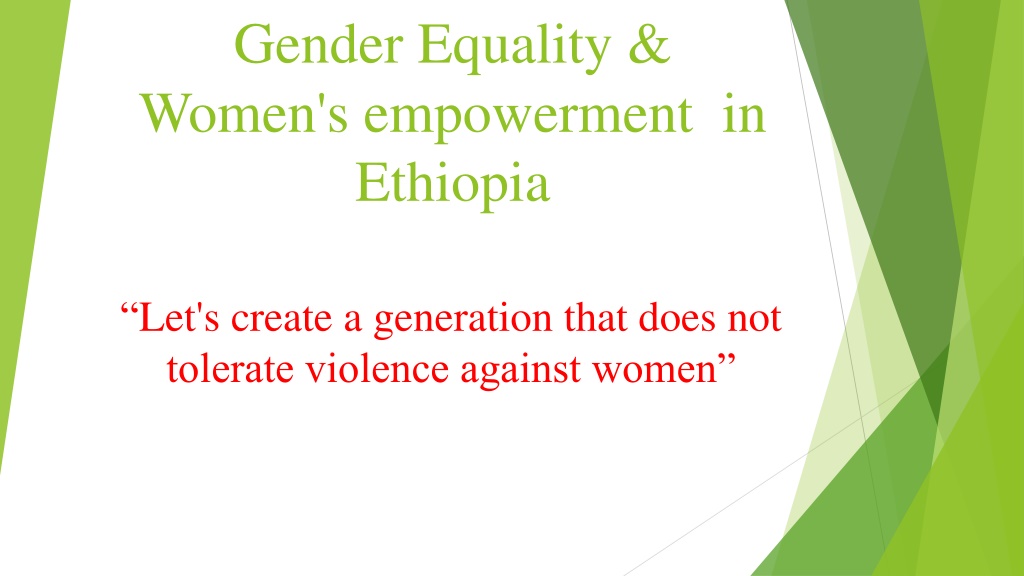
 undefined
undefined

